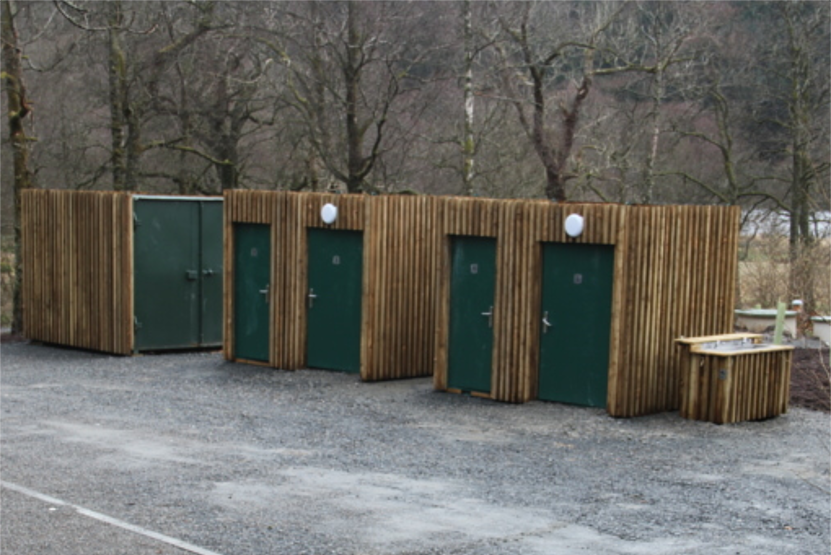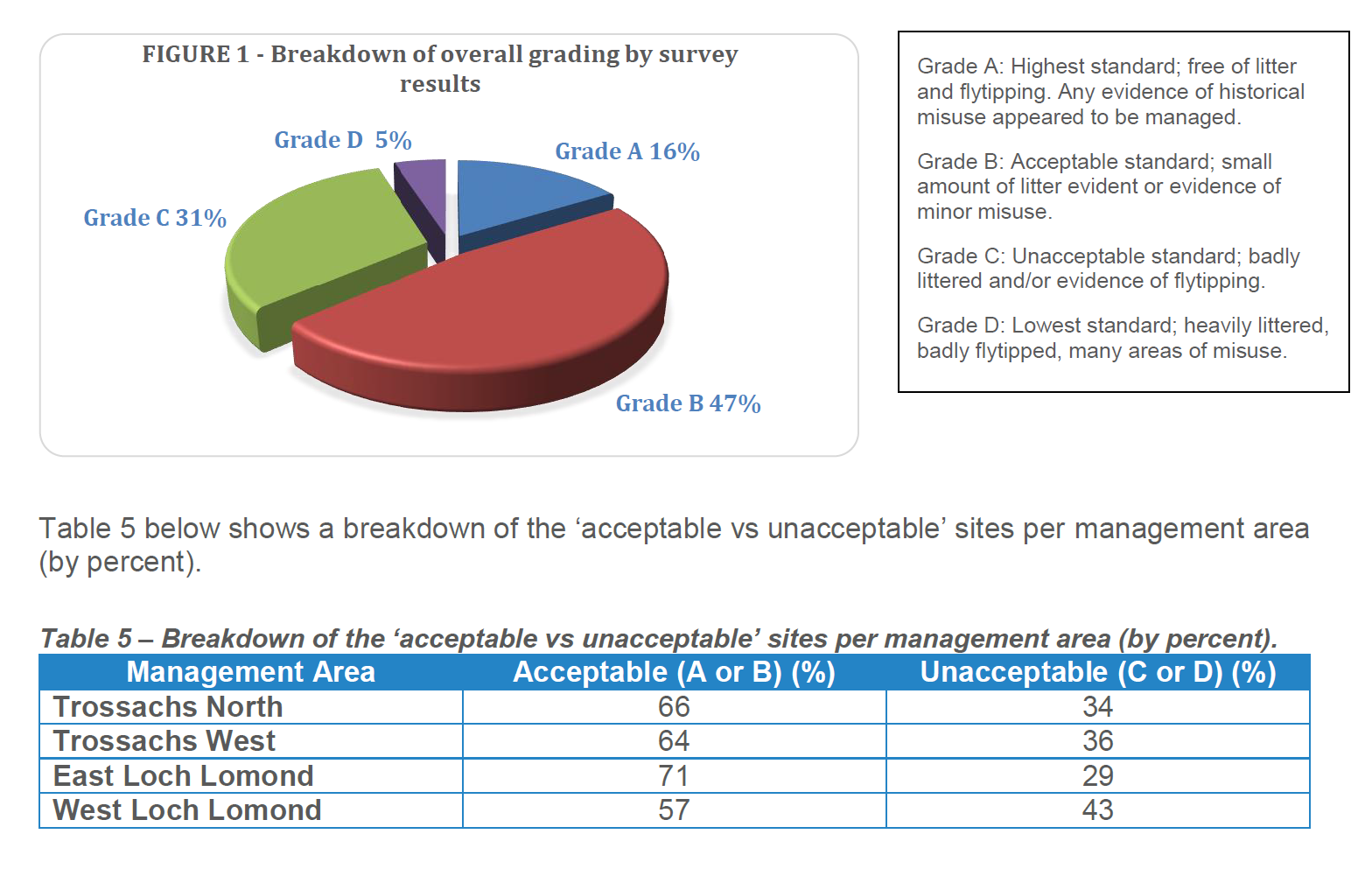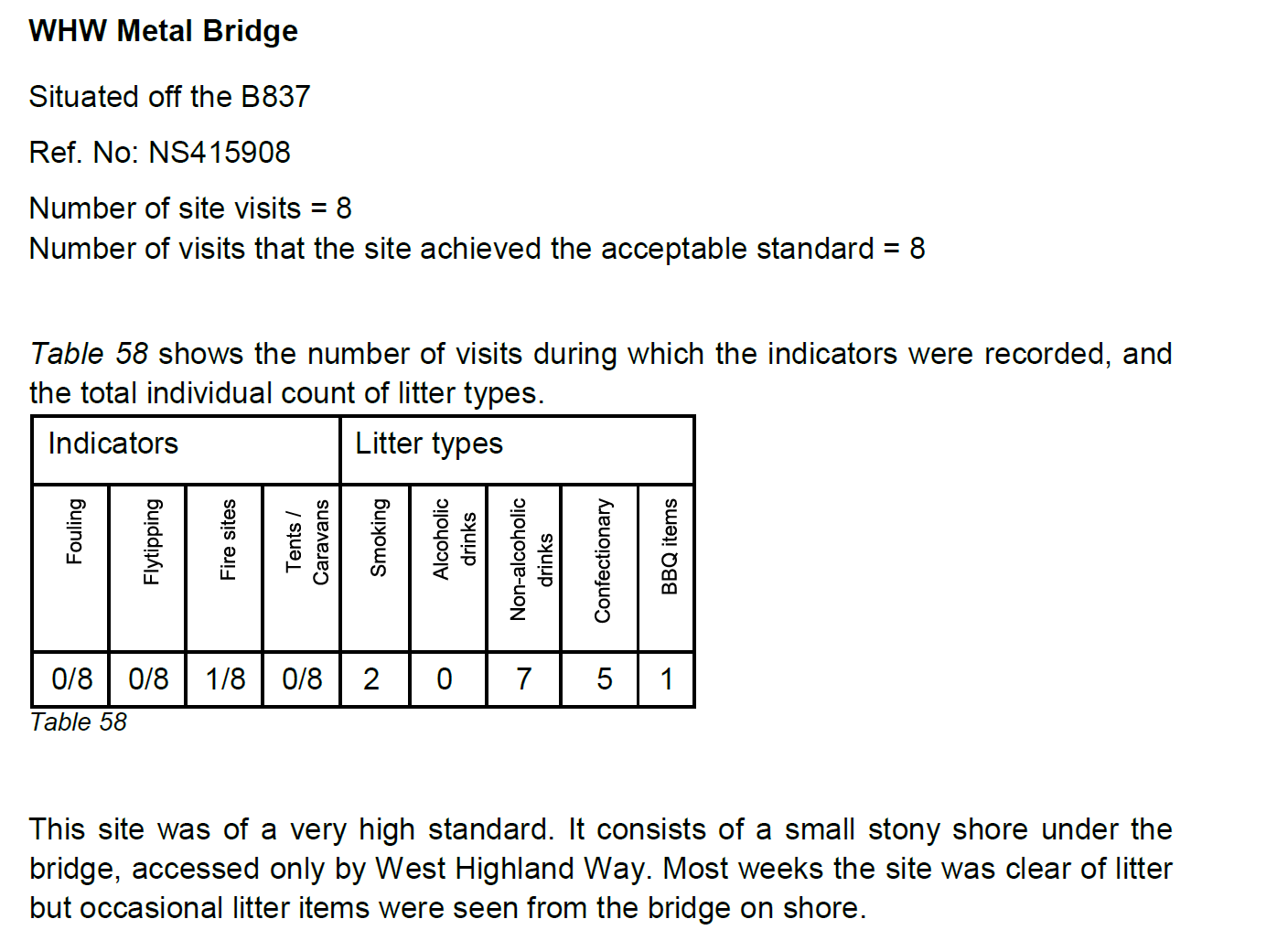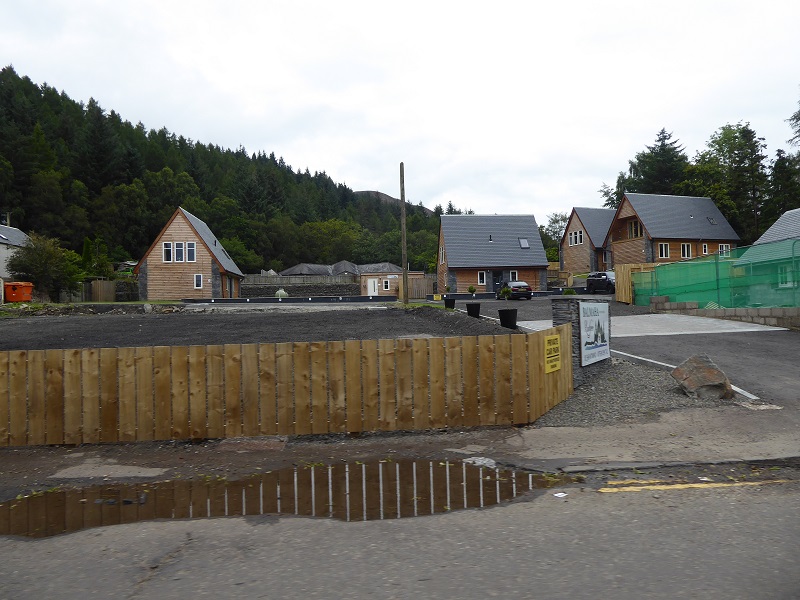
On Friday to mark the end of the camping byelaws – you were a criminal if you pitched your tent without a permit on Saturday but from past midnight could camp in the same place scot free – Phoebe Smith has a piece on Radio 4’s “You and Yours” http://www.bbc.co.uk/programmes/b095ptx2. (It runs from 28 mins 10 secs to 35 mins). Don’t be put off by the howlers, “lakes” for “lochs” and Balmaha described as a town, the rest of the content is quite good – Phoebe Smith loves camping and says so.
The Loch Lomond and Trossachs National Park Authority took Phoebe Smith out to Balmaha. After repeating the claim that there were far too many campers, the Park’s Director of Conservation Simon Jones went on to say large numbers of campers created certain problems such as litter and human waste and that the byelaws were addressing these, before correcting himself mid-speech and admitted human waste is still a problem. This was a public admission that the byelaws have NOT addressed the problems the Park claimed they would solve. This should not be a surprise. The problem has never been numbers, which have been concentrated on a few weekends a year, it has been the lack of facilities for campers and other visitors. By trying to concentrate campers in a few places through the permit system without any new facilities, all the National Park has done is concentrate impacts, the opposite of what it claimed it was wanting to achieve.
The LLTNPA then wheeled out Sandy Fraser, owner of the Oak Tree Inn (they use him most time they want someone to speak out in favour of the byelaws to the media), to talk to Phoebe Smith. Powerful stuff to anyone who did not know better: people “really didn’t want to live here any longer”, “it was a no go area” and the introduction of the east Loch Lomond byelaws was “like a light switch, night and day”. Now, I always believe money speaks louder than words, so I took a look at the accounts of the Oak Tree Loch Lomond Ltd, which was formed in 2009 and is described as a restaurant business:
| Year till 31st Oct | 09/10 | 10/11 | 11/12 | 12/13 |
| Net current assets | £86,785 | £169,623 | £265,883 | £363,898 |
The accounts are abbreviated, so don’t show what contributed to profit and loss for the year, but the total profit and loss feed into the “net current assets” line at year end. If people had stopped coming to Balmaha, prior to the east Loch Lomond byelaws being introduced in June 2011, one might have expected the first year of the new company to have been disastrous financially. Instead, the accounts show assets increased to £86,785 of which £76,785 came from profit. Hardly a sign that people were no longer coming to Balmaha. Moreover, the introduction of the byelaws in June 2011 did not mark a massive jump in profits. I think we can take Sandy Fraser’s claims with a very large pinch of salt.
While there were undoubtably some problems associated with camping and drinking at Balmaha prior to the byelaws coming into effect, I think these need to be seen in perspective. The main problem Sandy Fraser cited in the interview was that about once every three weeks people took the Oak Tree Inn benches and umbrellas down to the beach beyond Balmaha pier. Extremely irritating I am sure, but did this justify the removal of access rights? And what role does Sandy Fraser think the introduction of alcohol byelaws on east Loch Lomond by Stirling Council also in 2011 have in stopping this happening?
In terms of objective evidence about what changes had happened, the Park commissioned some research from Keep Scotland Beautiful which it eventually provided under Freedom of Information. It has never published this research or considered it at a Board Meeting, presumably because it makes uncomfortable reading:

The research does show the condition of sites on east Loch Lomond in 2015 (which was when the survey was undertaken) was better than in the other management zones but not that much better. Not the miraculous improvement claimed by Sandy Fraser. And this despite the camping ban, the alcohol ban and the clearway which prevents people visiting many of the places they used to go to.
Looking at the Keep Scotland Beautiful data in more detail, one site on east Loch Lomond that has really improved is the beach north of the pier at Balmaha which sits under the metal bridge and which used to be use for partying (hence why it was selected for the survey).

So, maybe Sandy Fraser has a point, the environs of Balmaha have improved a bit – something everyone should welcome. The question though remains, why were byelaws ever needed to do this? The site under the metal bridge is small and very visible, hence easy to police by rangers but if easy to police by rangers, why not the police? What should have happened is each time his benches went, Sandy Fraser should have phoned the police. Its the adequacy of policing in rural areas which is the real issue, not camping.

There are however, I believe, other agendas at play. The evidence shows that Balmaha is being turned to a luxury tourist destination with prices to match. My impression is campers don’t fit that image. Hence why, despite the considerable area of flat land to the south of the village, there is no campsite. Hence why the camping byelaws were extended down to the mouth of the Endrick, again without any evidence of problems. Camping is just not part of the agenda of the new lairds of Balmaha. If they understood the access legislation however they would know land can be exempted from access rights (under Section 11 of the Land Reform Act) without any need for byelaws and this could have been used to stop people camping within villages in the National Park.
The lack of publicity for the end of the byelaw season and the Park’s closure of facilities
In contrast to the launch of the byelaws in the Spring, there is NO publicity on the Park’s website and no news release to say people announcing they are now over and people can now camp freely again under access rights. This probably explains the lack of media coverage in Scotland (please contact parkswatch if you have come across anything). The explanation, I believe, is that if the LLTNPA had reminded the media the byelaws were over for the year, they might just have been asked some awkward questions, including what the byelaws had achieved. Better then not to mark the occasion and hope no-one noticed.
While some people may have realised that the byelaws ended on 30th September, I am sure most will not have realised that Loch Chon campsite is also now closed. This is incomprehensible. Here is what staff told the Board just a few weeks ago:
Loch Chon campsite has now been operating for six months and continues to be popular with visitors, with some weekends coming close to operating at full capacity. The total nights booked up until the end of August was 1160 with an average stay of 1.5 days. These bookings were representative of 1843 people; 1362 adults and 481 children
Now, leave aside everything which was wrong about this campsite (too many places, fixed pitches in the wrong places, no water supply and a toilet block which stank as a consequence) people visited because at least there were some facilities and, its one of the few lovely places where you are still allowed to camp. Why then, having paid well over £345k for this campsite, close it just because the byelaw season is over? If there was such demand, surely it would be worth keeping the campsite open for at least another month and leaving the toilets open after that?
How too does the decision to close Loch Chon fit with the fact that the other two campsites the Park is involved in, at Sallochy and Loch Lubnaig, are both open till the end of October? The answer is that other people operate those campsites, with no cost to the Park, but the Park has had to deploy two (excellent) rangers at Loch Chon to keep it going.
It makes me suspect the Park will now have also reverted to its previous practice of closing the toilets and carpark at Firkin Point. If so, the public should treat all claims by the LLTNPA that it wishes to improve infrastructure, with scepticism. The Park should know that human waste, about which it claims to be so concerned, biodegrades more slowly in winter than summer and is a strong reason why all toilets operated by the National Park should be open year round. Infrastructure is needed 365 days, not just over the summer and not just so the Park can claim to Scottish Ministers it has done something to provide for campers.
